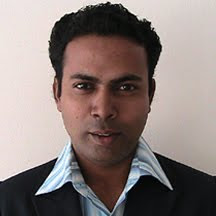There are four basic techniques to be used in animation. These are:
Drawn animation
Cut-out animation
Model animation or stop motion animation
Computer animation or computer generated imagery (CGI)
Drawn animation-- Drawn animation, also termed as traditional animation and classical animation, is the oldest and historically the most prevalent form of animation. In a traditionally-animated cartoon, each frame is drawn by hand.This encloses any form, where one drawing is put back by another in a progression. Each drawing is somewhat unusual from the one which is placed before.
Animated films are made up of thousands of drawings, depicted on screen very rapidly one after the other. It works in the same manner as the flip book does.
Cut-out animation-- The world's earliest known animated feature film was cutout animations, made in Argentina by Quirino Cristiani. By using flat characters, such as--strings, stiff fabric, props and backgrounds cut from materials such as paper; and by using buttons, matchsticks or even photographs, you can create cut-out animation. It embraces any figure of animation where cut-out forms be in motion or substitute by the other cut-outs.
Model animation or stop motion animation-- Model animation is a form of stop motion animation designed to merge with live action footage to create the illusion of a real-world fantasy sequence.
By using materials, such as--clay, wire that can be bent or formed into another shape, you can create model animation. This engrosses the filming of puppets or any other form of three-dimensional models. Before moving slightly and screening, it is placed, filmed and than these shots are placed jointly as a section of the film and will give the hallucination of moving models.
Computer animation or Computer Generated Imagery (CGI)-- Computer animation is the skill of building the moving images by means of computers. This refers to the portrayal of three-dimensional models and locations on the computer. Images can be scanned into the computer via digital photography or made within the computer itself.
To produce the delusion of movement, an image is presented on the computer screen which is swiftly put back by the new image that is alike to the preceding image, but shifted to some extent. Computer animation is basically a digital successor to the art of stop motion animation of 3D models and frame-by-frame animation of 2D illustrations.
In a method known as--Tweening or Morphing, the variations in appearance between the key frames are automatically considered by the computer and finally Animation is rendered at the end.
Monday, March 1, 2010
Subscribe to:
Post Comments (Atom)


No comments:
Post a Comment